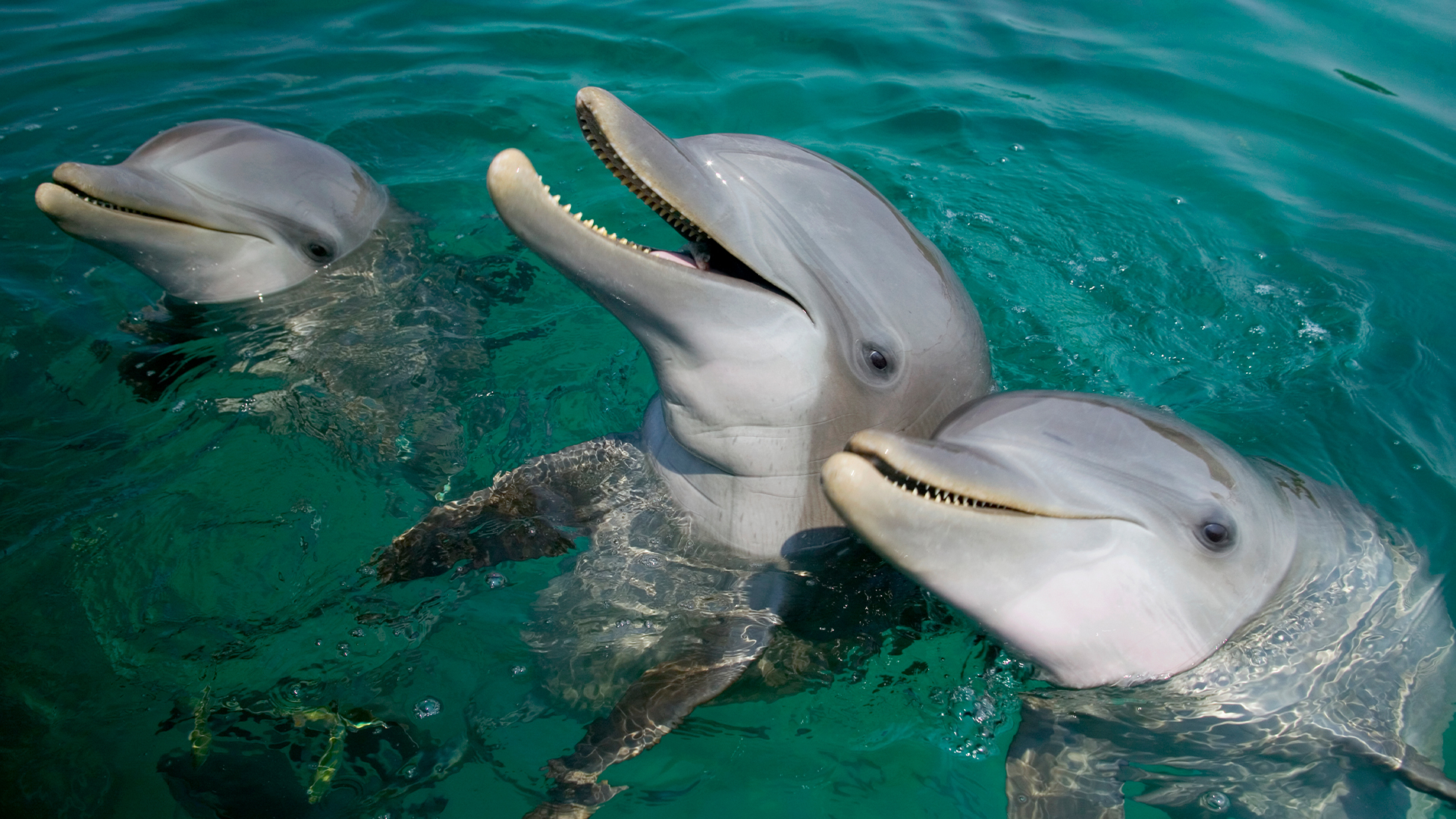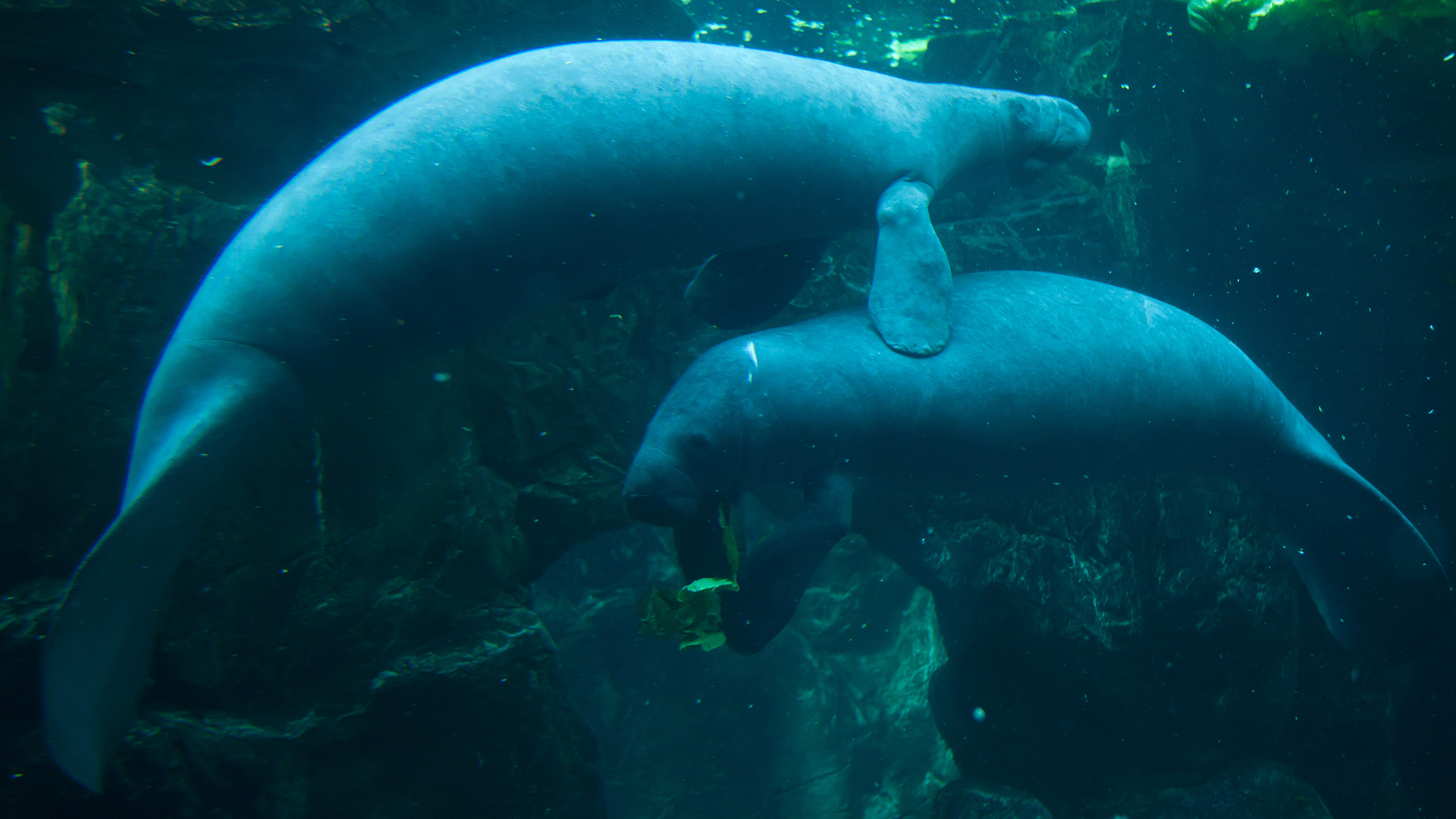
Dolphins are mysteriously attacking manatee calves — and this hostile behavior may be a regular occurrence, scientists say.
In a study published Jan. 10 in the journal PLOS One, researchers documented 10 aggressive interactions by bottlenose dolphins (Tursiops truncatus) towards Antillean manatee calves (Trichechus manatus manatus), which targeted orphans as well as youngsters that were with their mothers. The attacks occurred near Belize over a 21-year timespan, from 1999 to 2020, with the majority of instances occurring between 2015 and 2020.
"Dolphins do not eat manatees and why they act this way with another species is unclear," said study lead author Eric Angel Ramos, a scientist at the International Foundation for Nature and Sustainability (FINS), a team of international conservation scientists. "It's likely that they are quite curious when they encounter manatees, and because dolphins are often aggressive with each other, they display this behavior to other species like manatees," he told Live Science in an email.
The researchers observed dolphins attempting to separate calves from their mothers and harassing, ramming and biting them. In each case, the dolphins initiated the interaction.
Researchers believe the attacks were intentional. "I'm confident in saying that, yeah, I think they want to inflict death," study senior author Jeremy Kiszka, a biological science professor at Florida International University, told Live Science.
The researchers also found tooth rake marks — with spacing that indicated dolphin teeth — on orphaned calves during health checks at a rehabilitation center, providing further evidence of these violent assaults.
Although scientists don't fully understand what's going on, dolphins are known to display similar behaviors with their own young and calves from other species. They have previously been recorded biting other dolphins, and are known to attack and kill harbor porpoises (Phocoena phocoena).
Related: Orcas are learning terrifying new behaviors. Are they getting smarter?
"Around the world we see bottlenose dolphins literally acting like jerks and being violent with other species," Kiszka said.

Dolphins might act aggressively towards manatees and other marine animals because they perceive them as competitors for food, space or resources, Kiszka said. And if these animals' ecosystems degrade due to climate change and human activities, there's a chance it could cause the species' habitats to overlap further, resulting in an increase in these hostilities, Kiszka said.
Bottlenose dolphins are an intelligent species. They have large brains, a wide range of complex emotions, including grief, and their own cultures.
The aggressive interactions between manatees and dolphins took place over many years, so they're likely more common than scientists previously thought and could impact the survival of the species. Antillean manatees are threatened across their range — this subspecies of the West Indian manitee can be found in marine, brackish and freshwater from southeastern Texas to northeastern Brazil. Even around Belize, which has a relatively healthy population, they are threatened by vessel collisions.
Understanding exactly what's going on could help conservationists protect calves and the wider manatee population, Kiszka said. "Any additional source of mortality is something we should be concerned about."







